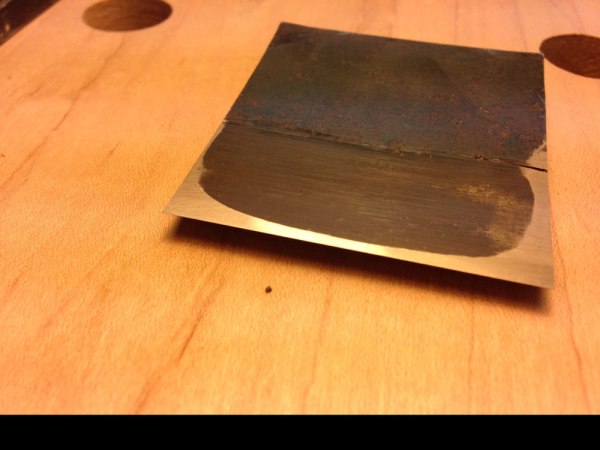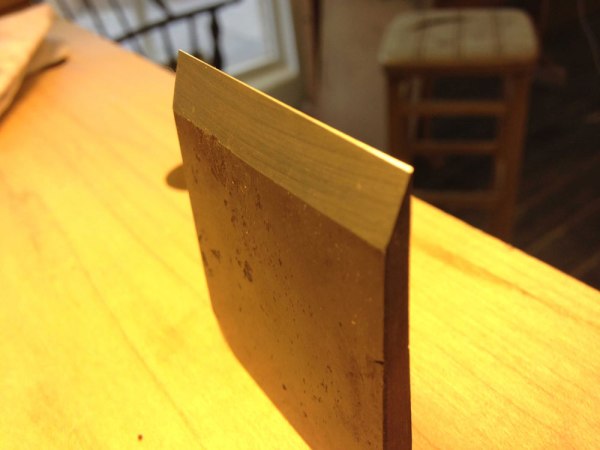
Part 4 of a British Introduction to Japanese Planes
What we in the West do not realise is that a plane comes to a maker as a kit of parts. He would buy the blade and maybe the back iron from the blacksmith but they may have been made by two smiths. The body would come from a Kanna maker down the road. These are the three parts that have to be made to fit together and it’s YOUR job to do it.
Note that there are only three parts. There is NO WEDGE to press it all together.
What we have instead is a tapering blade and back iron that tightens as it fits down in the body of the plane.
Most plane bodies are cut at an effective pitch of 38° this works well for them as they are cutting mostly softwood. If we are to plane hardwood to a shine we need a slightly higher pitch. My advice has been to go for 41°. Higher and you tend to loose the polish and have a harder pull on the plane body; lower and you get tear-out.
Getting a body made for a specific blade is not a problem. I will give a source later.
Back irons need some explaining. We have cheap bits of low-carbon steel that flap around like mother’s washing. The Japanese have laminated steel back irons that are made to sit a HAIR’S THICKNESS behind the edge. The contact with the blade is honed smooth and there is an angle ground at the point of contact with the blade about 0.25mm wide of about 70°. See the photo. This surface is to drive the shaving immediately up after being cut by the blade.

High-tech stuff this back iron.
Earlier planes were made to function without back irons, but this was in softwood. I believe we would not get the result we want without a back iron. Maybe wrong, but that’s the gut feel at the moment.
Next we will be fitting blades to the body.
— David Savage, http://www.finefurnituremaker.com